Network Engineering Course
Master network design and management skills with hands-on projects
- Cisco Packet Tracer, Wireshark, GNS3, SolarWinds, Putty, and NetFlow
- Live online and offline interactive sessions from top industry professionals
- Guaranteed placement support through our career advancement services
- Understand network configuration, troubleshooting, security, and performance monitoring

World-Class Instructors

1:1 with Industry Mentors

55% Avg. Salary Hike

Interview Preparation
What You’ll Learn
Accelerate your career in network engineering with our Network Engineering Training at Tech Pragna in Bangalore. This comprehensive course equips you with the skills and techniques to design, configure, and troubleshoot networks—perfect for both beginners and working professionals.
Network Engineering Training – Key Features
- Cisco Packet Tracer, Wireshark, GNS3, SolarWinds, Putty, and NetFlow
- Network design, configuration, troubleshooting, security, and performance monitoring
- Hands-On Projects: Work on real-world network scenarios and practical simulations
- Understand routing and switching protocols including OSPF, BGP, and VLANs
- Live online and offline interactive sessions from top industry professionals
- Guaranteed placement support through our career advancement services
Request more information
Network Engineering Training Curriculum
Module 1: Networking Fundamentals
Introduction to Networking Concepts
OSI and TCP/IP Models Explained
Network Topologies (Star, Mesh, Ring, Hybrid)
IP Addressing (IPv4 vs IPv6)
Subnetting and Supernetting Techniques
Network Protocols (HTTP, FTP, DNS, DHCP)
Network Devices (Hubs, Switches, Routers)
Hands-on: Basic Network Configuration
Module 2: Network Infrastructure
Ethernet Standards (10/100/1000/10G)
Wireless Networking (Wi-Fi 6, 802.11ax)
Fiber Optic vs Copper Cabling
Power over Ethernet (PoE)
Network Virtualization (VLANs, VXLAN)
Data Center Networking
Lab: Configuring VLANs
Troubleshooting Physical Layer Issues
Module 3: Routing and Switching
Routing Protocols (Static vs Dynamic)
OSPF and EIGRP Fundamentals
BGP for Enterprise and ISPs
Layer 2 Switching Concepts
STP (Spanning Tree Protocol)
QoS (Quality of Service) Implementation
Lab: Configuring OSPF on Cisco Routers
Troubleshooting Routing Issues
Module 4: IP Services
NAT (Network Address Translation)
PAT (Port Address Translation)
DHCP Implementation
DNS Configuration and Troubleshooting
NTP (Network Time Protocol)
SNMP for Network Monitoring
Lab: Configuring NAT on a Router
IP SLA for Performance Monitoring
Module 5: Network Security
Network Security Fundamentals
Firewalls (Stateful vs Stateless)
VPN Technologies (IPSec, SSL)
AAA (Authentication, Authorization, Accounting)
Network Access Control (NAC)
Threat Mitigation Techniques
Lab: Configuring a Site-to-Site VPN
Security Best Practices
Module 6: WAN Technologies
WAN Concepts and Technologies
MPLS Fundamentals
SD-WAN Architecture
Leased Lines vs Broadband
Cellular WAN (4G/5G)
Lab: Configuring a WAN Connection
Troubleshooting WAN Issues
Cloud Connectivity (AWS/Azure Direct Connect)
Module 7: Network Automation
Introduction to Network Automation
Python for Network Engineers
Ansible for Network Configuration
NETCONF and YANG Models
REST APIs for Network Devices
Lab: Automating VLAN Deployment
Infrastructure as Code (IaC)
CI/CD for Networking
Module 8: Cloud Networking
- Cloud Networking Concepts
- AWS Networking (VPC, Direct Connect)
- Azure Networking (vNet, ExpressRoute)
- Google Cloud Networking
- Multi-Cloud Networking
- Lab: Configuring a Cloud Network
- Cloud Security Groups
- Troubleshooting Cloud Networks
Module 9: Network Monitoring and Management
Network Monitoring Tools (SolarWinds, PRTG)
SNMP and NetFlow
Syslog and SIEM Integration
Performance Baselining
Network Documentation
Lab: Setting Up a Monitoring System
Capacity Planning
Disaster Recovery Planning
Module 10: Wireless Networking
Wireless Standards (802.11a/b/g/n/ac/ax)
Wireless Security (WPA3, Enterprise)
Wireless Site Surveys
Wireless Controller Configuration
Troubleshooting Wireless Issues
Lab: Configuring a Wireless Network
IoT Wireless Technologies
Future of Wireless (Wi-Fi 6E, 7)
Module 11: Emerging Technologies
Software Defined Networking (SDN)
Network Function Virtualization (NFV)
Intent-Based Networking
5G and Network Slicing
Edge Computing
AI in Network Operations
Lab: SDN Controller Configuration
Future Trends in Networking
Module 12: Capstone Project & Career Prep
Enterprise Network Design Project
Network Troubleshooting Scenarios
Resume Building for Network Roles
Interview Preparation (Technical Questions)
Certifications Roadmap (CCNA, CCNP, JNCIA)
LinkedIn Profile Optimization
Ethics in Network Engineering
Final Project Presentation
Master In-Demand Skills with Practical, Industry-Based Learning
What Role Does a Networking Engineering Professional Play?
Network Engineer
Designs, configures, and maintains network infrastructure to ensure secure and reliable connectivity across organizational systems
Network Administrator
Monitors and manages daily network operations, performs troubleshooting, and ensures smooth functioning of network devices and services
Network Security Engineer
Focuses on securing network systems by implementing firewalls, VPNs, intrusion detection systems (IDS), and performing vulnerability assessments
System and Network Support Specialist
Provides technical support, resolves network-related issues, and ensures minimal downtime for users and business operations.
Network Solutions Architect
Designs complex network solutions aligned with business goals, including advanced routing, switching, and cloud networking setups.
Network Consultant
Advises organizations on optimizing network performance, upgrading infrastructure, and implementing best practices for scalability and security
Skills Covered
Network Troubleshooting
Protocol Analysis
Cisco IOS/NX-OS
CLI Scripting
Network Visualization
Python Automation
Traffic Analysis
Device Hardening
Technical Documentation
Infrastructure Intelligence
Network Engineering Tools Covered

Career Services


Placement Assistance

Personalized Guidance

Mock Interview Preparation

One-on-One Mentoring session

Career Oriented Seesions

Resume & LinkedIn Profile Building
How our program works
Enhance Your Skills to Transform Your Career Path
- Gain official proof of your expertise from a trusted institution, increasing your value in the eyes of employers and clients.
- Stand out in competitive job markets and unlock better job roles, promotions, or freelance opportunities.
- Certifications ensure your skills are aligned with current industry standards, making you job-ready from day one.
- Completing a certified course strengthens your belief in your capabilities and readiness to tackle real-world challenges.
- Join a professional community, gain access to hiring managers, and receive support from placement partners and mentors.
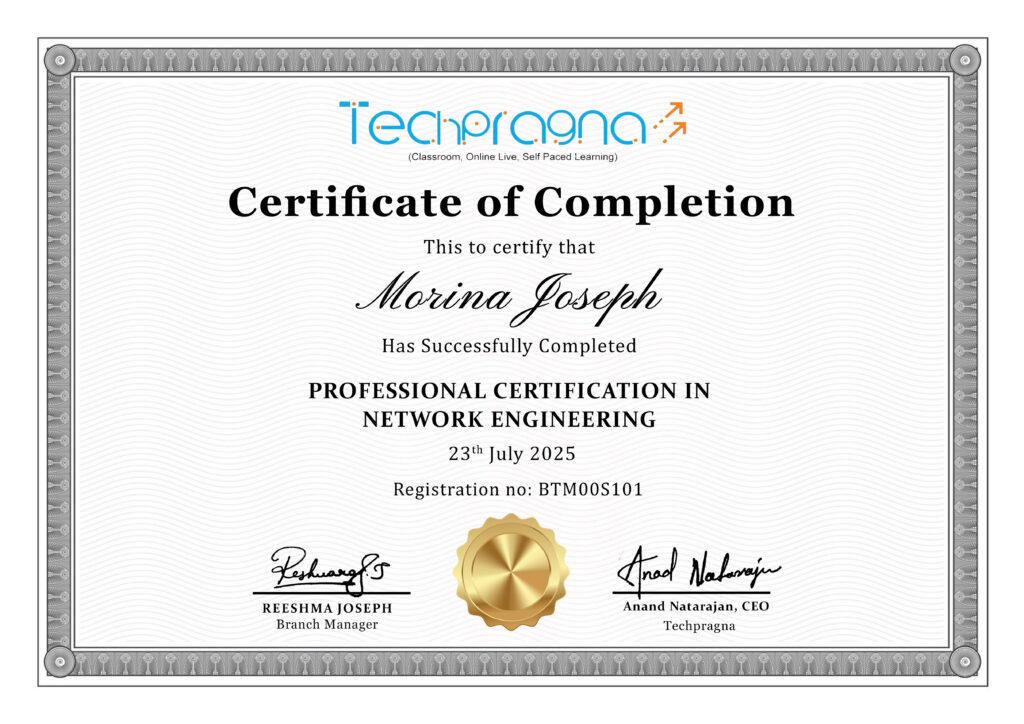
Networking Engineering Projects Covered
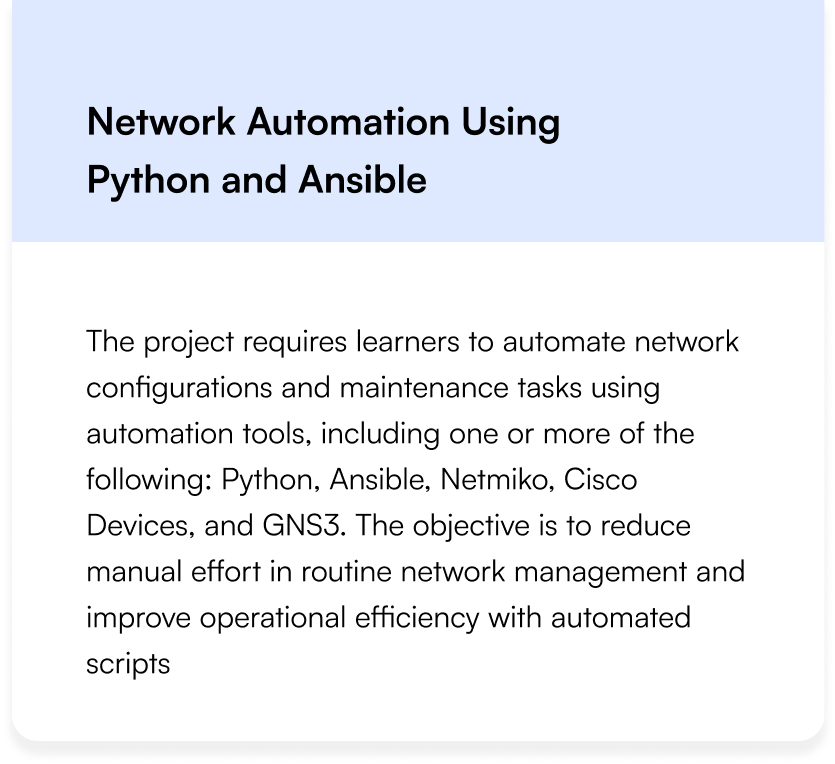
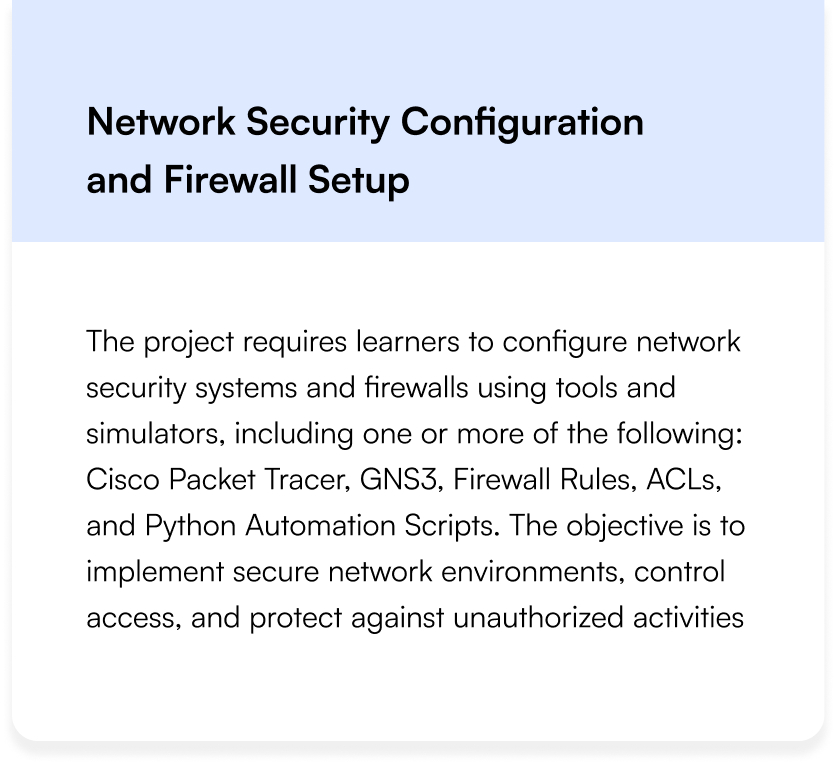
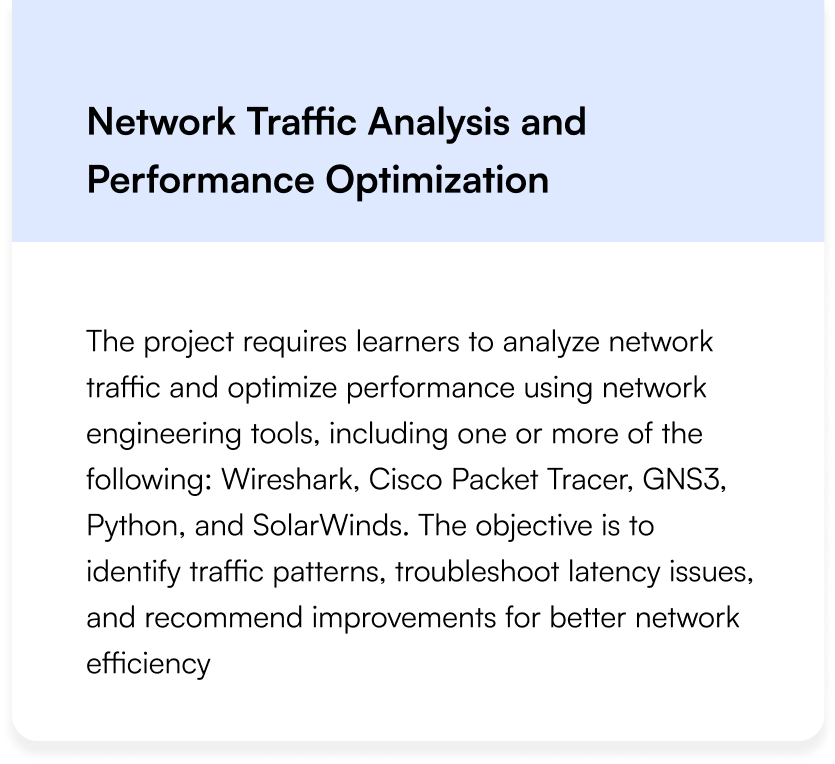
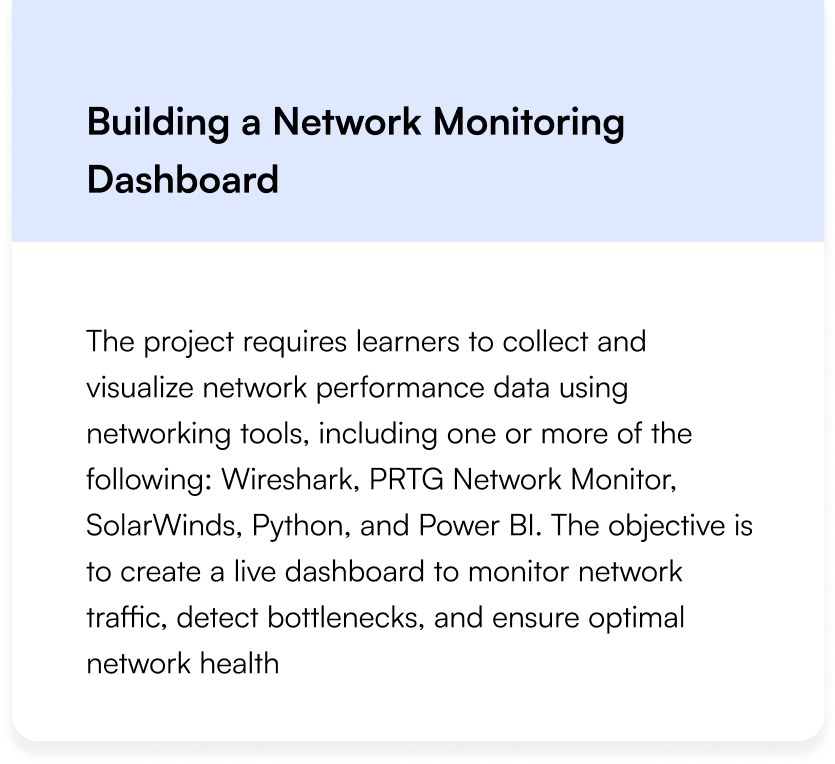
Land Your Dream Job Our Alumni


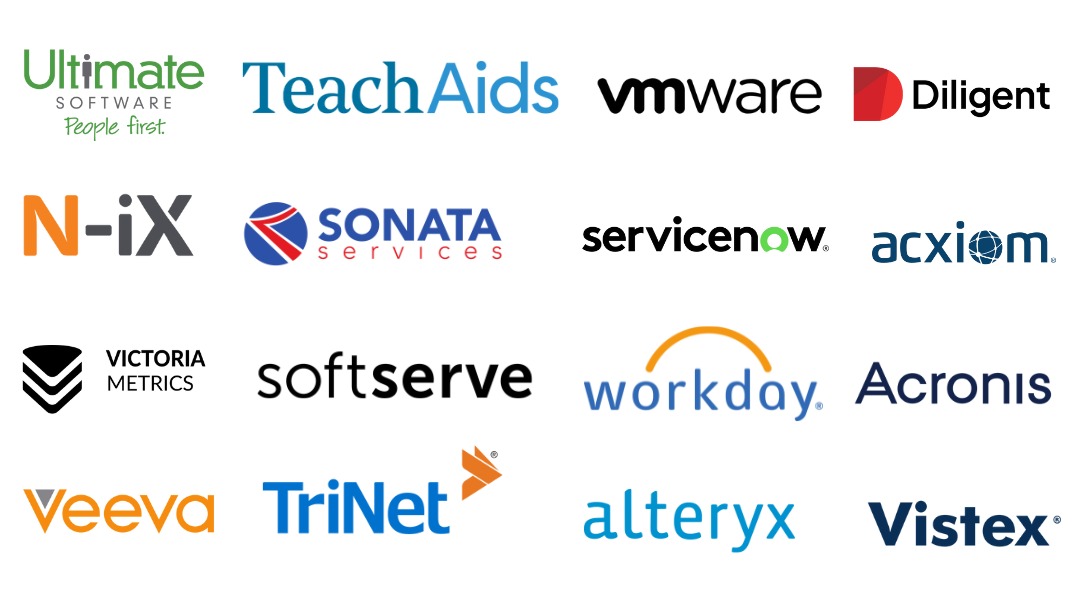
Networking Engineering Training FAQs
What is a Network Engineer?
A Network Engineer designs, implements, manages, and troubleshoots computer networks, ensuring smooth data flow and secure connectivity within an organization
What are the main types of networks?
The main types are LAN (Local Area Network), WAN (Wide Area Network), MAN (Metropolitan Area Network), and WLAN (Wireless LAN)
What is the OSI Model?
The OSI Model (Open Systems Interconnection) is a 7-layer framework that standardizes communication functions in a network, from physical transmission to application interaction
What is the difference between a switch and a router?
A switch connects devices within a network (LAN), while a router connects different networks (LAN to WAN) and routes traffic between them.
What is IP addressing?
IP addressing assigns a unique numerical label (IPv4 or IPv6) to each device on a network for identification and communication
Is this course available online or offline?
Tech Pragna are offered in both online and offline
Who can join the Network Engineering Training?
Anyone interested in networking—freshers, IT graduates, or working professionals—can join. No prior experience is required
What Our Learners Have To Say




Explore the Latest Trending Courses
Software Testing
- Online/Offline
- 6 Months
- Professional Level Certification
- Projects and Case Study
Data Science
- Online/Offline
- 6 Months
- Professional Level Certification
- Projects and Case Study
Full Stack Development
- Online/Offline
- 6 Months
- Professional Level Certification
- Projects and Case Study
Cyber Security
- Online/Offline
- 6 Months
- Professional Level Certification
- Projects and Case Study






